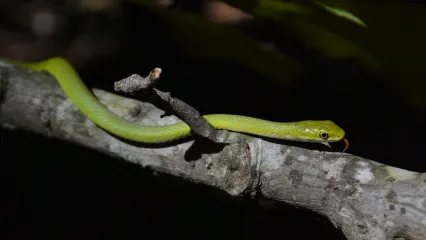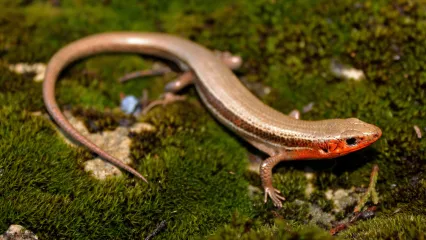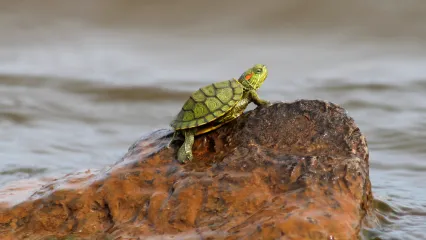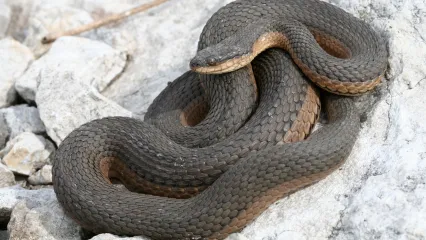
Description
Rough greensnakes are one of only two uniformly green, thin-bodied snakes in the state and thus can easily be distinguished from all other species on the basis of color alone except some populations of the eastern yellow-bellied racer, which occurs in central and western Oklahoma. In addition, rough greensnakes have distinctly keeled scales, whereas racers have smooth scales. The top and sides of the body are green and the underside is white or light yellow. The body is extremely streamlined and the tail is long and thin.
Size
Large adult rough greensnakes can reach almost four feet in total length, about a third of which is the tail. Females reach slightly larger size than males.
Habitat
Rough greensnakes occur throughout most of central and eastern Oklahoma but not in the panhandle or the western one-third of the state. The distribution in the United States extends west to east from central Texas to at least New York and north to south from southeastern Pennsylvania through the entire Florida peninsula.
Life Cycle
Rough greensnakes are active during the day, and are comfortable climbing on limbs of trees and shrubs. They search through vegetation for spiders, grasshoppers, caterpillars, and a few other kinds of insects. These snakes are often encountered in blackberry bushes, but also climb into trees and occasionally descend to the ground. They are active from March through late October. Males reach sexual maturity during their second year of life whereas females reach sexual maturity during their third year. They can live as much as eight years. Mating occurs in spring and females deposit elongate eggs inside of rotted areas in trees during June or July. Eggs hatch in late August or early September. Different females often use the same nesting sites.
How To Observe
Rough greensnakes can be observed during the day by carefully searching through shrubs, especially blackberry bushes, near water. At night, they can often be found sleeping in shrubs near water. During spring and fall, these snakes are often observed during the day stretched out on roads, especially dirt roads.
(This profile was created by Dr. Laurie Vitt as part of a partnership between the Wildlife Department and the Sam Noble Oklahoma Museum of Natural History. It was funded as part of a larger State Wildlife Grant to survey and inventory amphibians and reptiles of the Wildlife Management Areas of Oklahoma: T-35-P-1.)


